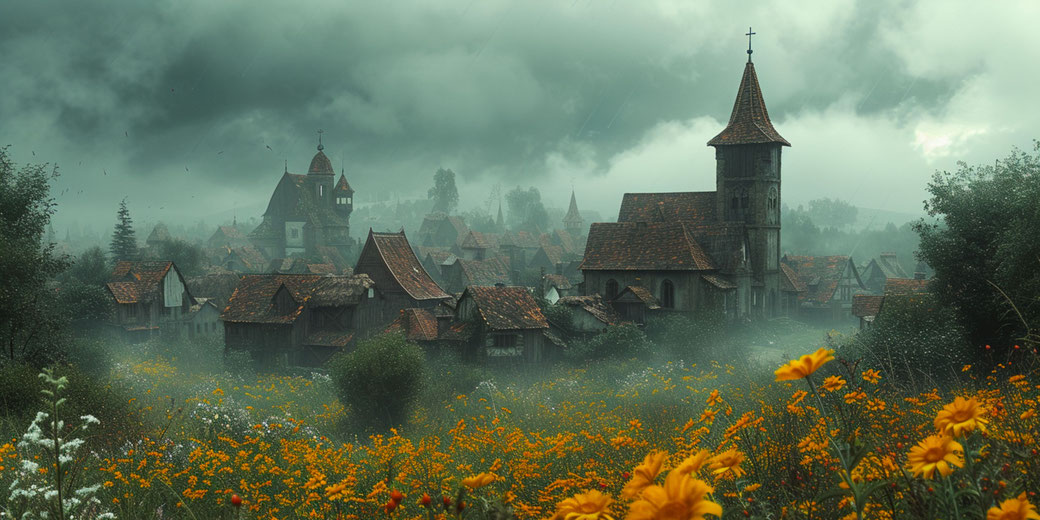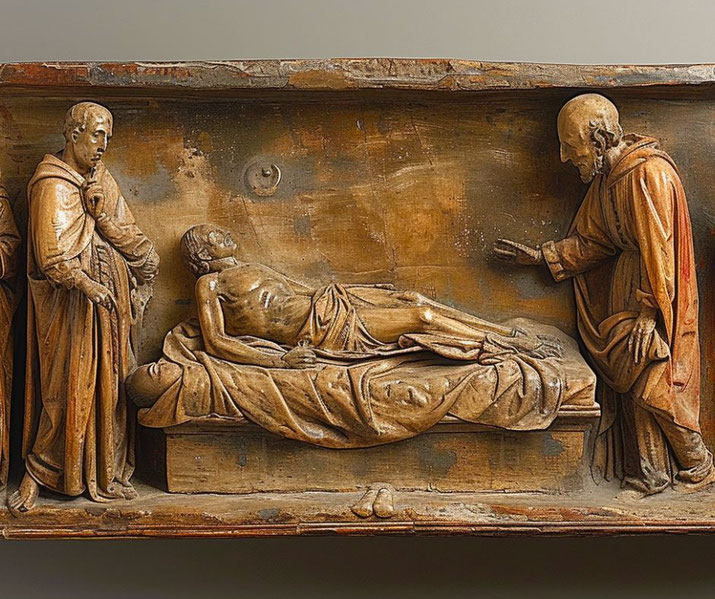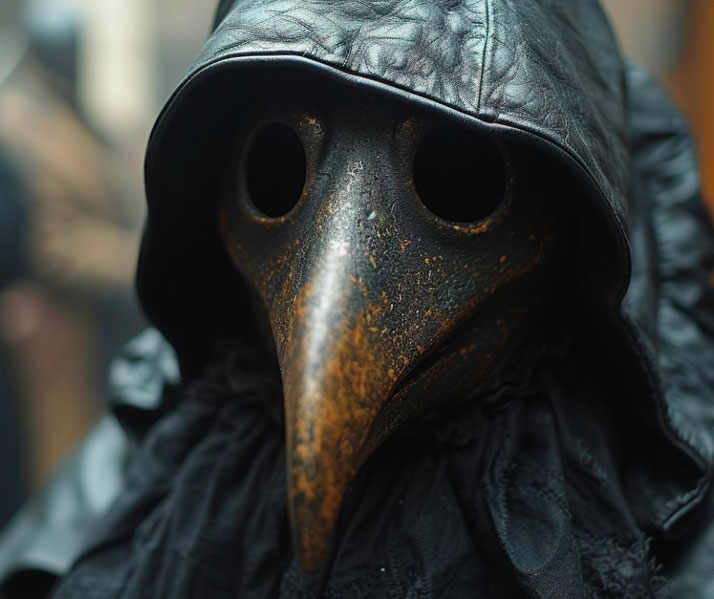The Black Death: Medieval Europe's recurring nightmare

The Black Death, also known as 'the Plague', is one of the most devastating events of the Middle Ages. It was a disease that spread across much of the world over several centuries.
However, the most lethal moment in its history occurred in the mid-1300s.
This terrible event has had a lasting impact on European history. In this article, we will take a closer look at the Black Death and what caused it.
We will also explore its aftermath and how it changed Europe forever.
What was the Black Death?
The Black Death was a pandemic of bubonic plague that swept through Europe and Asia primarily in the 14th century.
It is estimated to have killed up to 200 million people, or about 60% of Europe's population, making it one of the deadliest pandemics in human history.
Symptoms of the disease included fever, chills, weakness, and swollen and painful lymph nodes, known as buboes.
In severe cases, death could occur within just a few days of the onset of symptoms.
How people at the time explained the plague
Medieval people in the 14th century believed that the Black Death was caused by a combination of natural and supernatural factors.
The term "supernatural factors" refers to beliefs and explanations that go beyond the natural world and are often associated with religion or spirituality.
Some of the reasons that people attributed the cause of the plague to were bad air (miasma), the alignment of planets, and divine punishment.
It was thought the miasma was caused by noxious fumes in the air, often associated with rotting organic matter.
This belief was based on the ancient Greek theory of the four humors, which held that imbalances in the body caused by bad air could lead to illness.
The alignment of planets was another belief, as people of the time believed that the movements of celestial bodies could influence events on Earth, including diseases.
Divine punishment was a commonly held belief that the Black Death was a result of God's anger towards humanity for its sins.
This idea was rooted in religious and moral beliefs, and was often used to explain natural disasters and other forms of suffering.
The real cause of the Black Death
These beliefs, while they were widely held, were not scientifically accurate and did not reflect the true cause of the disease.
We now know that it was a bacterium called Yersinia Pestis. This disease spreads through fleas which live on rats and other rodents.
Research suggests that human ectoparasites, such as body lice and human fleas, might have also played a significant role in spreading the plague among humans.
The Black Death was first reported in Europe in 1346, and it spread rapidly across Europe over the next few years.
The plague was especially deadly in cities and towns, where there were large concentrations of people living in close quarters.
There was no cure for the disease, and so it killed indiscriminately.
For a long time, it was not known where the Black Death originated from.
However, in 2022, scientists, who had examined DNA from the teeth of plague victims, suggested that it came from an area in modern Kyrgyzstan.
They suggested that a small mammal in the region, called marmots, which still have fleas that carry the bacterium even today, helped transmit the disease to humans.
From there, it then spread to Europe along trade routes.

First outbreaks
The Black Death first appeared in the city of Caffa in the Crimea in 1346, which is now part of Ukraine.
The inhabitants of Caffa were besieged by Mongol forces, and a group of merchants who had been trapped inside managed to escape the city.
They sailed to Constantinople (now Istanbul), where they unwittingly brought the plague with them.
Reports from Florence, Italy suggests that the disease then spread through trade routes from Constantinople to other parts of Europe.
The first case in Florence was recorded on March 20th, 1348, and it quickly spread throughout Tuscany.
The Black Death reached England by October 1348 and had killed an estimated 30–60% of London’s population by the end of the year.
Description of symptoms
The symptoms of the plague were very frightening and painful, which gave it its name: “the Black Death” because victims’ skin turned black with gangrene as they died.
The disease was also known as “the Great Mortality”, due to how many people perished from it.
After infection, people could live as long as two weeks before dying. The disease was often fatal within five days, and most people died within seven to ten days after they first started showing symptoms of infection.
The main symptom of the Black Death was a swelling called a bubo on the neck or groin area that would fill with pus until it burst open, releasing blood and other bodily fluids.
These swellings were so painful that some victims would try to cut them off themselves!

Response to the Black Death
The Black Death caused widespread panic and hysteria throughout Europe.
People did everything they could to avoid catching the disease. There were reports of people being burned alive or thrown into rivers as a way of preventing them from spreading the plague.
People also turned to prayer as a way of avoiding infection. They would pray for God’s mercy and forgiveness, and some people prayed for death instead of living with the fear of contracting the plague every day.
Others went on pilgrimages in an attempt to be purged from sinfulness by visiting holy sites like Jerusalem or Rome.

Effects of the Black Death
The Black Death had a devastating impact on Europe. It killed somewhere between 75 million to 200 million people in Europe during its first outbreak from 1346 to 53.
It had a devastating effect on society. The plague left behind a continent full of empty villages and towns.
The loss of much of the workforce meant crops could not be harvested and there was a significant decrease in trade and commercial activity. There was also a rise in crime rates, as people were desperate to find food and other resources to survive.
The huge labor shortage led to a rise in wages and increased social mobility. The prices of goods also increased and there were opportunities for new and creative businesses as people had to become more efficient with fewer workers.
People became much more fearful and superstitious, as they were unsure why this terrible disease had appeared without warning.
The Church was blamed for failing to protect its flock from this scourge and many people turned away from religion in fear that God had abandoned them.
Some Europeans became convinced that Jews were responsible for the plague because they were different and didn’t follow Christian beliefs or practices.
This led to many pogroms (violent attacks) against Jewish communities.
The Black Death was a devastating epidemic that left behind a changed Europe. The social and economic impacts had a profound effect on the course of history.

Further reading
What do you need help with?
Download ready-to-use digital learning resources
Copyright © History Skills 2014-2025.
Contact via email
With the exception of links to external sites, some historical sources and extracts from specific publications, all content on this website is copyrighted by History Skills. This content may not be copied, republished or redistributed without written permission from the website creator. Please use the Contact page to obtain relevant permission.





